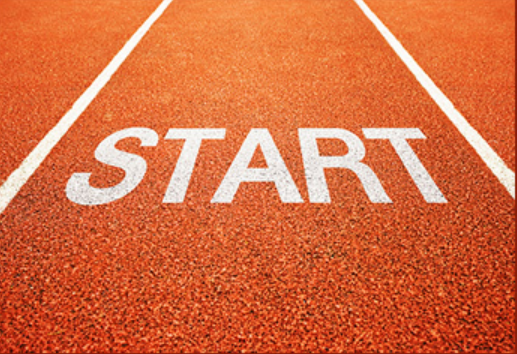
LET’S MOVE …WHAT ARE WE WAITING FOR?
We all know exercise is good for us. What steps have you taken to live a more active life? Are you sitting on the couch waiting for someone to motivate you to get up? Do you tell yourself, “Tomorrow I’m going to get healthy”? Or is it more like, “I wish I could fit into the clothes I love, but I don’t know how to make that happen?” We’ve all heard “It’s never too late!” or “Anyone can do it.” And guess what? It’s true! If you don’t know where to start, don’t know how to fit in fitness or feel overwhelmed with life’s daily tasks, take heart!
Address Your Obstacles
- “I’m so busy. I just don’t have time!” Many Americans live with a packed schedule. You can make your health a priority over life’s other demands. Even our nation’s president sets aside time to exercise! You don’t have to do your whole workout all at once. Get up 30 minutes earlier in the morning to take a brisk walk, or tack on an extra 30 minutes in the afternoon or evening to raise your heart rate with strength training. You can exercise in two or three 10-15 minute blocks and still benefit!
- “I can’t afford a gym membership.” Walking is free! If it’s cold or rainy, head to one of the many shopping malls that open their doors early for walkers and joggers. Sometimes gyms run specials. Watch for these at the beginning or end of the year. Or consider buying some workout DVDs or borrowing them from the library. You can even download exercise podcasts. Whatever you choose, find a way to start moving! Get started with these tips for long-term success.
- “I got bored with my workout routine.” Try something new! There are so many ways to get active. Try tennis with some friends, soccer with your kids or even just switching from yoga to pilates. Your body will respond to the change, and you might notice firmer muscles or extra pounds melting off. Regardless, variety helps you stay more invested in living an active life.
- “I feel too tired after a workout.” Chronic fatigue with exertion can signal a problem, but if your healthcare provider clears you for exercise, you may just need to pace yourself better. Walk before trying to jog. You may want to consider other energy-boosting plans, too.
- Are you pacing yourself and keeping your heart rate at the right level?
- Are you getting enough sleep at night?
- Are you eating what fuels your body or are you eating too much food that your body can’t use?
- “I don’t like working out alone.” This is a common complaint that’s easy to fix. Find a buddy! Get a walking partner or introduce yourself to someone at the gym, join a team or a walking group, find a neighbor to walk with or exercise with your family. When you exercise in pairs, it’s easier to hold each other accountable – especially on those cold, rainy days! You can also listen to audiobooks or your favorite music on days when no one is available to join you.
- “I’m too young” or “I’m too old.” Neither excuse is true. When you’re in your 20s and 30s, it’s important to regulate your body’s metabolism, strengthen your heart and prevent diseases. When you’re older, exercise plays a vital role in keeping you healthy and strong. Several studies document how regular exercise improves quality of life during the aging process. So if you’re exercising when you’re in your 80s, you just might feel like you’re in your 70’s!
- “I’m new to exercise,” or “I’m overweight and I don’t know where to start.” Is this you? It’s easy to use these excuses as mental roadblocks to success. Don’t let them stop you. Everyone needs to start somewhere.
Here are some steps to help get you started.
- Assess yourself. Realistically, what can you do?There’s no good excuse for denying yourself a healthier life!
- Can you walk a mile? How long does it take you?
- Can you continue to walk at a brisk pace for 20 minutes? For 30 minutes?
- Can you swim one lap?
- How many push-ups can you do?
- Can you bend down and touch your toes?Your starting point is always based on what you can do! Try tracking your activity and look at it as a place to start and build up more as you are able.
- Add on gradually. Gradually increase your workouts by setting goals. If you can walk 1 ½ miles in 30 minutes, your pace is three miles an hour. You can train your heart to handle a faster-paced walk using intervals. For example, every five minutes, try pushing yourself to walk one minute at a faster pace. Before you know it, the faster pace will be your new normal. The American Heart Association recommends at least 150 minutes of moderate activity each week (brisk walking, for example). Cardio exercise burns calories and benefits your heart and lungs. Strength training with weights or resistance bands is also recommended two to three times a week. Strength training builds muscle which, in turn, burns fat and helps your muscles and joints stay healthy for a long, physically active life. A combination of these two types of exercise is important for good health.
- Many reliable resources are available to help you get started. Books, DVDs, podcasts and personal trainers are a few examples.
Are you still sitting on the couch? Put on your shoes and move your body! Turn on your favorite music and dance. Today is the day to start on the road to better health. Remember, it’s OK to start slowly and build up to your goal.
http://www.heart.org/HEARTORG/HealthyLiving/PhysicalActivity/GettingActive/From-the-Couch-to-the-Pavement—A-Plan-to-Get-You-Moving_UCM_425106_Article.jsp#.Vytj0ssUWM9
